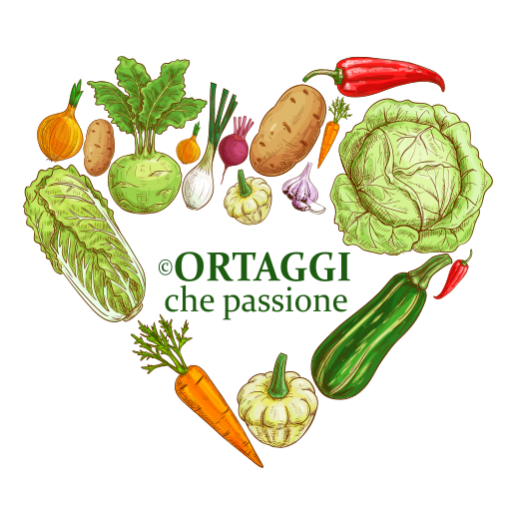Whole pan-fried onions are a quick and surprisingly tasty side dish. Spring is the ideal time to use white onions, which are sweet and tender, becoming irresistible when roasted in the Apulian or Neapolitan style. The cooking time is short, but the final flavor is reminiscent of more elaborate preparations. And if you fear peeling them, don’t worry: with some tricks, you can do it without shedding a tear.
SEASON for #fresh onions: from March to December.
RECIPES with onions
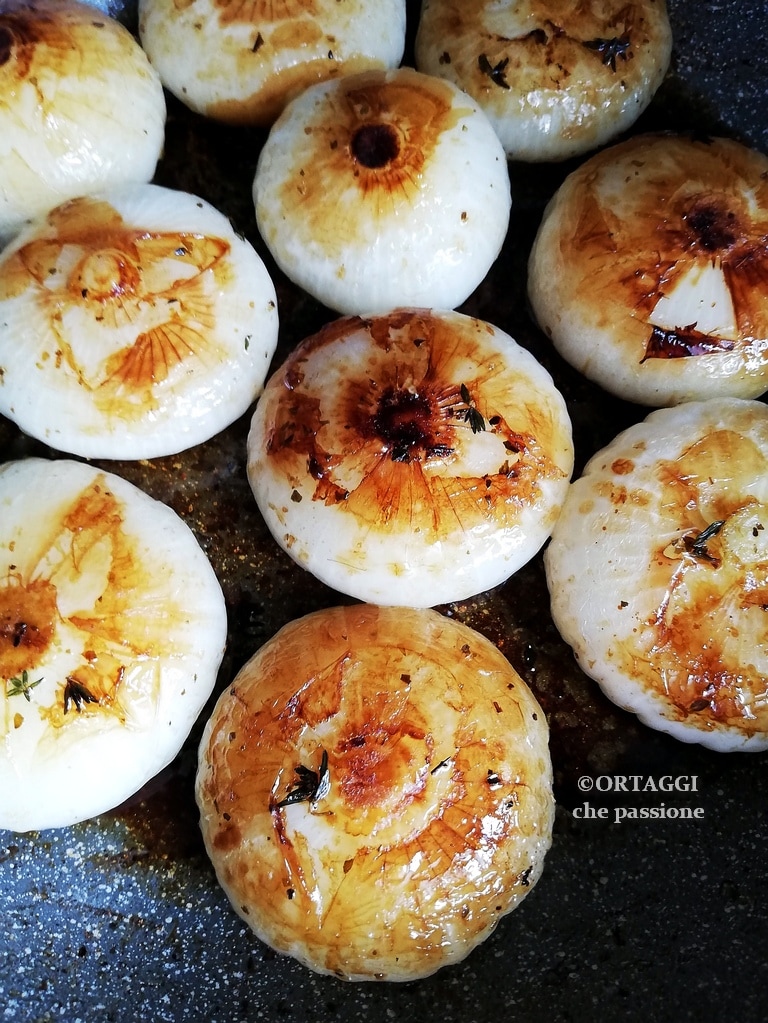
- Difficulty: Easy
- Cost: Cheap
- Preparation time: 10 Minutes
- Portions: 4 People
- Cooking methods: Stovetop
- Cuisine: Healthy
- Seasonality: Spring, Summer, and Fall
- Energy 95.00 (Kcal)
- Carbohydrates 18.45 (g) of which sugars 8.37 (g)
- Proteins 2.17 (g)
- Fat 2.06 (g) of which saturated 0.35 (g)of which unsaturated 0.06 (g)
- Fibers 3.36 (g)
- Sodium 201.69 (mg)
Indicative values for a portion of 160 g processed in an automated way starting from the nutritional information available on the CREA* and FoodData Central** databases. It is not food and / or nutritional advice.
* CREATES Food and Nutrition Research Center: https://www.crea.gov.it/alimenti-e-nutrizione https://www.alimentinutrizione.it ** U.S. Department of Agriculture, Agricultural Research Service. FoodData Central, 2019. https://fdc.nal.usda.gov
Whole Pan-Fried Onions
- 2.2 lbs white onions (from Margherita IGP)
- 1 drizzle extra virgin olive oil
- to taste fine salt (and aromatic herbs)
Tools
- Pan non-stick
- Ladle spatula
How to Cook Whole Onions in a Pan?
CLEAN THE ONIONS
Should I peel them completely or leave some outer layers?
The ideal is to remove only the dry outer skin, leaving the inner layers intact. This helps maintain the shape of the onions during cooking and contributes to a soft yet firm texture.
After peeling the onions, rinse them quickly under running water.
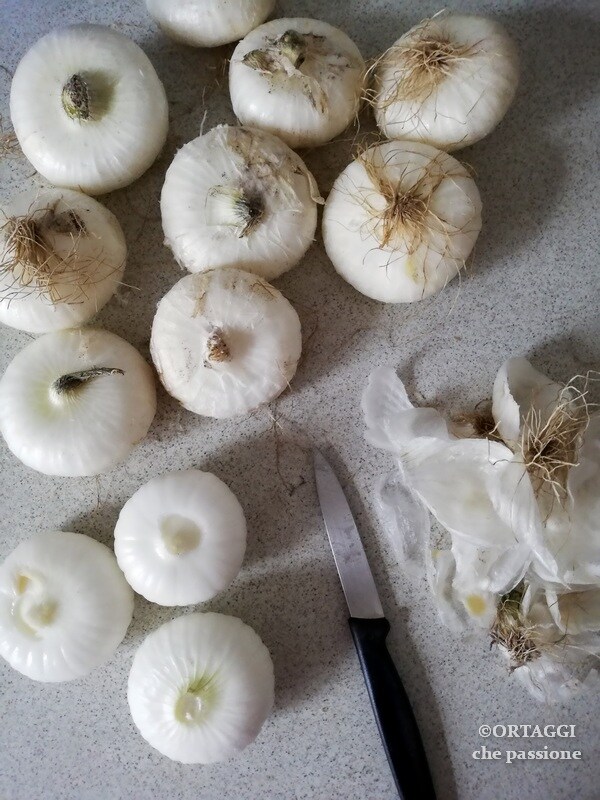
Then transfer them to a large pan, adding a drizzle of oil, a pinch of salt, and your preferred herbs. Cook the onions first on one side, then turn them to brown on the other side.
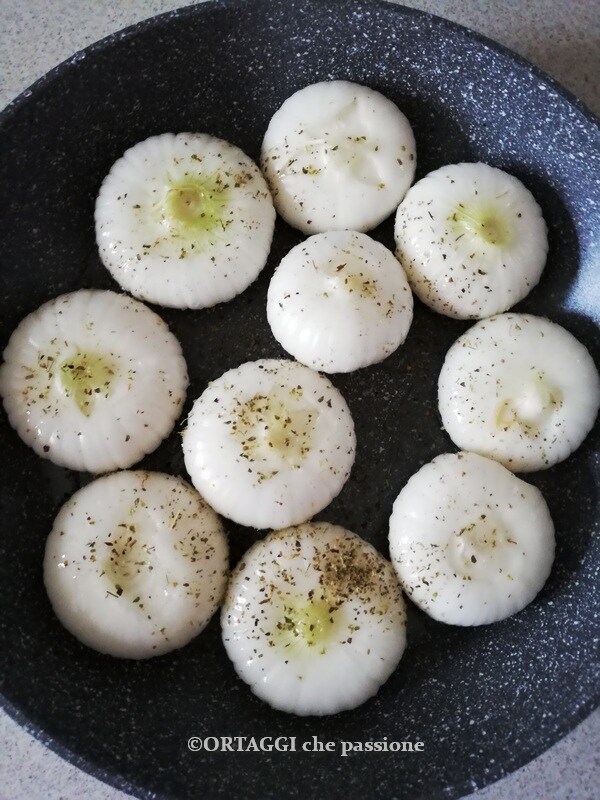
If they dry out too much during cooking, add a splash of water, broth, vinegar, or a bit of white wine.
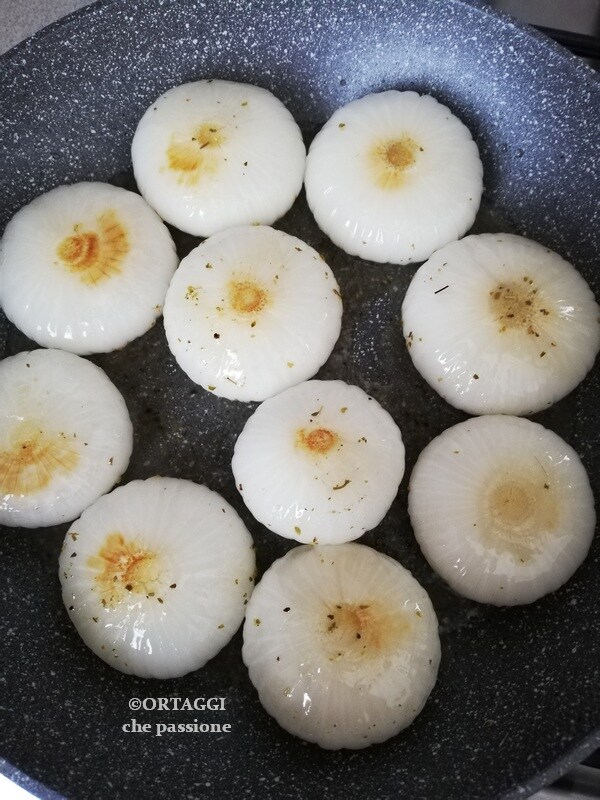
For a more appetizing result, towards the end of cooking, slightly increase the heat to form a light crust.
How long should whole onions be cooked in a pan?
It depends on the size of the onions and the heat. Generally, at medium-low heat, it takes 20-30 minutes. The important thing is that they are well caramelized on the outside and soft on the inside.
For an even lighter version, cook them with a bit of vegetable broth or water. The flavor will be less rich but still very pleasant, especially if cooked slowly to enhance their natural sweetness.
Bay leaf, oregano, rosemary, sage, and thyme pair excellently. A pinch of smoked paprika or a dash of balsamic vinegar at the end of cooking can also add an interesting note.
To achieve a sweet and sour flavor, add a mixture of vinegar (apple or wine), sugar (brown or honey), and salt while cooking the onions. For a more intense taste, you can use balsamic vinegar or soy sauce.
STORE whole pan-fried onions
Once cooked and cooled, store them in an airtight container in the fridge for up to 3 days.
To store them longer, freeze after cooling. They can last up to 3 months. To consume, simply reheat in a pan or microwave.
FAQ (Questions and Answers)
Can I cook them in advance?
Yes, in fact, they are even better the next day! Resting makes them more flavorful. Just store them in the fridge, well-covered, and gently reheat in a pan or oven before serving.
What can I pair them with?
They are very versatile. Perfect as a side dish for vegetable dishes like legume meatballs, whole grains, omelets, or simply in a sandwich. They also add character to a simple pasta dish.
Can I use any type of onion?
Yes, you can use different types of onions, but the result varies slightly. Golden ones are the most balanced, sweet yet flavorful. White ones are more delicate, while Tropea red ones become very sweet and aromatic. Borettane or scallions, however, are perfect if you’re looking for a tender texture and a more refined taste.
Are onions healthier raw or cooked?
Raw they retain more antioxidants (especially quercetin, which tends to reduce with cooking) and have antibacterial properties, but they can be harder to digest.
Cooked they become sweeter and more digestible, but some beneficial substances diminish, while others (like sulfur compounds) transform into forms that are easier to absorb.
Ultimately, it depends on what you’re looking for: more benefits “raw” or more taste and lightness in cooking.How to cook onions to make them digestible?
To make them more digestible, cooking onions slowly over low heat is the best trick. In a pan, with a drizzle of oil or even just a bit of water, onions become soft and lose the pungent note that can cause discomfort.
Is it true that baked onions are lighter and more digestible?
Baking onions is one of the best ways to make them light and easy to digest. The oven’s heat softens them slowly and brings out their natural sweetness. No need for excess oil or constant stirring: just let them cook slowly, maybe with a bit of water or a splash of vinegar to make them even more delicate.

